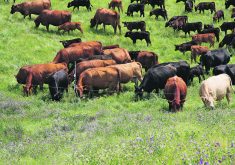Rolf Penner’s reaction (WP March
10, 2011) to the Canadian Wheat Board (CWB) laker purchase – a sound business decision that will put more money into farmers’ pockets – is hardly surprising given Rolf’s penchant for attacking everything the CWB does.
In my view, anyone who is seriously concerned about the CWB moving beyond its mandate with the laker purchase should revisit the hopper car issue.
Understanding that transportation is the single biggest cost farmers have in grain marketing, the CWB in the late 1970s took steps to purchase hopper cars. In 2005, more hopper cars that had been part of leasing agreements were purchased outright by the farmer-controlled board of directors.
Read Also

Invigor Gold variety viewed as threat to condiment mustard
Invigor Gold, the canola-quality mustard developed by BASF, is on a collision course with Canada’s condiment mustard industry. It’s difficult to see how the two can co-exist.
The CWB fleet currently consists of 3,411 hopper cars. If they were purchased now these cars would cost some $253 million – roughly four times the cost of the lakers.
And these hopper cars are now generating revenue that goes directly to farmers, roughly $7 million each year or $35 million over the last five years.
Just five short years from now, the hopper cars will have contributed more net dollars to farmer revenues than the cost of the two new lakers.
The start of my own farming career coincided very closely with the CWB’s original hopper car purchase. Bit by bit I have helped pay for these cars, and they have repaid me many times over with better rail capacity and cash, which contributes directly to all farmers’ grain tickets.
In short, over my farming career the hopper cars have been an important investment both in terms of overall marketing capabilities and direct cash rewards.
Over the years, hopper car ownership became so accepted and supported that the Farmer Rail Car Coalition had very broad based support from farmers and farm organizations, with only a handful of individuals and a few marginal groups working to undermine the farmer ownership of the government fleet.
Building on the mandate that made hopper car ownership possible, the CWB’s laker purchase once again opens up new avenues for farmers to be involved in and to benefit directly from the marketing of their grain to distant buyers.
The expected life span of the lakers is a minimum of 25 years, which means they will end up generating around $250 million in revenue for producers, or over four times their original cost.
This is another investment that will continue to pay dividends to farmers for years to come.
Stewart Wells,CWB Farmer Director District 3,
Swift Current, Sask














